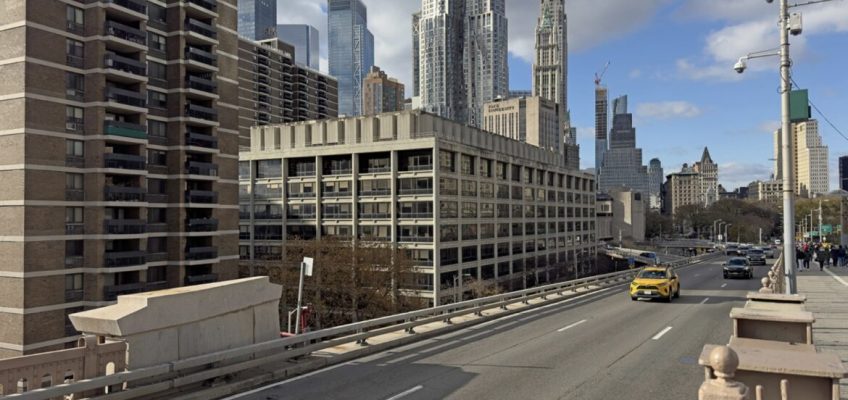By MATTHEW DALY and MICHAEL PHILLIS
WASHINGTON (AP) — A nonprofit that was awarded nearly $7 billion by the Biden administration to finance clean energy and climate-friendly projects has sued President Donald Trump’s Environmental Protection Agency, accusing it of improperly freezing a legally awarded grant.
Related Articles
Homeland Security overhauls asylum phone app — now it’s for ‘self-deportation’
Meet the federal worker who went rogue: ‘I hope that it lights a fire under people’
Drawing huge crowds, Bernie Sanders steps into leadership of the anti-Trump resistance
Ontario slaps 25% increase on electricity exports to US (including Minnesota) in response to Trump’s trade war
Supreme Court will take up state bans on conversion therapy for LGBTQ+ children, in a Colorado case
Climate United Fund, a coalition of three nonprofit groups, demanded access to a Citibank account it received through the Greenhouse Gas Reduction Fund, a program created in 2022 by the bipartisan Inflation Reduction Act and more commonly known as the green bank. The freeze threatens its ability to issue loans and even pay employees, the group said.
“The combined actions of Citibank and EPA effectively nullify a congressionally mandated and funded program,” Maryland-based Climate United wrote in a Monday court filing.
In a related action, the Coalition for Green Capital, a separate group that received $5 billion from the Biden-era program, sued Citibank Monday, alleging breach of contract over the refusal to disburse the grant funds awarded by the EPA.
“Citi’s actions have blocked CGC from deploying funds appropriated by Congress for energy projects to lower electricity costs and provide clean air and water for all Americans,” the Washington-based group said in a statement.
The two nonprofits are among eight groups tapped by then-EPA Administrator Michael Regan to receive $20 billion to finance tens of thousands of projects to fight climate change and promote environmental justice. The money was formally awarded in August.
While favored by congressional Democrats, the green bank drew immediate criticism from Republicans, who routinely denounced it as an unaccountable “slush fund.” Regan sharply disputed that claim.
The bank was quickly targeted by EPA Administrator Lee Zeldin, who was confirmed to the role in late January. In a video posted on X, Zeldin said the EPA would revoke contracts for the still-emerging program. Zeldin cited a conservative journalist’s undercover video made late last year that showed a former EPA employee saying the agency was throwing “gold bars off the Titanic” — presumably a reference to spending before the start of Trump’s second term.
Zeldin has repeatedly used the term “gold bars” to accuse the Greenhouse Gas Reduction Fund’s recipients of misconduct, waste and possible fraud.
According to the lawsuit filed in federal court, Citibank cut off access to Climate United’s bank account on February 18 — an action the bank did not explain for weeks.
The cutoff took place as Zeldin made multiple public appearances accusing Climate United and other groups of misconduct, eventually announcing that the funds were frozen, according to the lawsuit. Climate United said the EPA has refused to meet with the group.
Several Democratic lawmakers slammed Zeldin’s attacks on the green bank as a “sham investigation and unsubstantiated funding freeze.”
The Trump administration’s “baseless attacks on these investments will only cost jobs, increase prices and harm our communities,” Maryland Sen. Chris Van Hollen, Massachusetts Sen. Ed Markey and Michigan Rep. Debbie Dingell said in a statement Monday. The three Democrats pushed for creation of the green bank.
Citibank said it was reviewing the Climate United lawsuit.
“As we’ve said previously, Citi has been working with the federal government in its efforts to address government officials’ concerns regarding this federal grant program,” the bank said in a statement Monday. “Our role as financial agent does not involve any discretion over which organizations receive grant funds. Citi will of course comply with any judicial decision.”
The EPA declined to comment, citing pending litigation. A hearing on the case is scheduled for Wednesday in U.S. District Court for the District of Columbia.
In its court filing, Climate United pointed to the resignation of Denise Cheung, a high-ranking prosecutor in the U.S. Attorney’s Washington office, who said she was forced to step dow n after refusing demands from top Trump administration officials to freeze the climate groups’ assets.
Zeldin raised questions in a letter to the agency’s watchdog about the EPA’s use of Citibank to hold the money, a structure that allowed the eight entities to be used as “pass throughs” for eventual grant recipients. The process undermined transparency, Zeldin alleged.
He also questioned the qualifications of some of the entities overseeing the grants and said some were affiliated with the Biden administration or Democratic politics, including Stacey Abrams, a former Democratic nominee for Georgia governor. Trump singled out Abrams over her ties to the green bank in his address to Congress last week.
In a letter to EPA officials on March 4, Climate United disputed Zeldin’s allegations. The group’s lengthy application material is publicly available and the EPA used a rigorous selection process, Climate United said, adding that its spending is transparent.
In addition to Climate United, the new fund has awarded money to other nonprofits, including the Coalition for Green Capital, Power Forward Communities, Opportunity Finance Network, Inclusiv and the Justice Climate Fund. Those organizations have partnered with a range of groups, including Rewiring America, Habitat for Humanity and the Community Preservation Corporation.
The green bank represents ideas Congress enacted that the Trump administration doesn’t like: fighting climate change and helping communities that are often low-income or majority-Black and Hispanic, said Ilmi Granoff, a climate finance expert at the Sabin Center for Climate Change Law at Columbia University.
“The resources have already been spent, which means they’re trying to come up with pretexts to do something the government is not supposed to do, which is claw back resources” that Congress provided, Granoff said, comparing the Trump administration’s investigations to a “fishing expedition.”
The Trump administration said Friday that it’s pulling $400 million from Columbia University, canceling grants and contracts because of what the government describes as the Ivy League school’s failure to squelch antisemitism on campus.
Phillis reported from St. Louis.
The Associated Press receives support from the Walton Family Foundation for coverage of water and environmental policy. The AP is solely responsible for all content. For all of AP’s environmental coverage, visit https://apnews.com/hub/climate-and-environment




